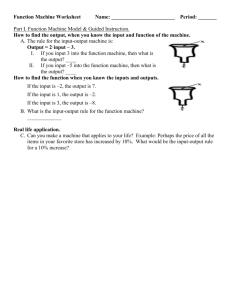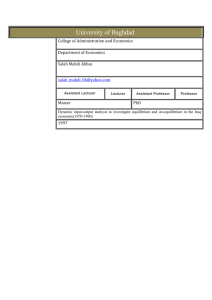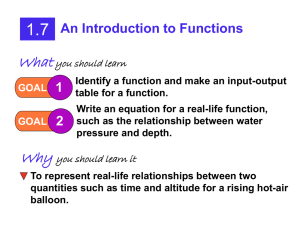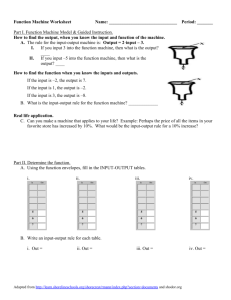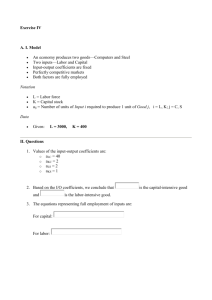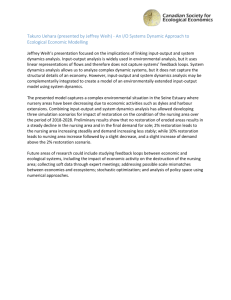Abstract
advertisement
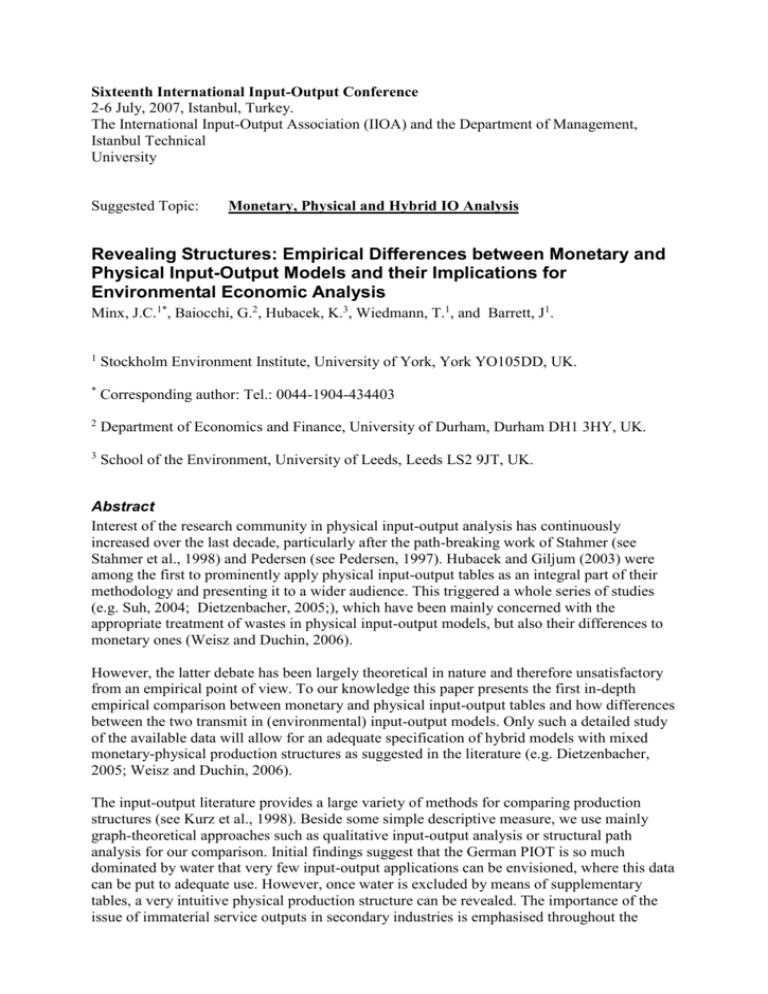
Sixteenth International Input-Output Conference 2-6 July, 2007, Istanbul, Turkey. The International Input-Output Association (IIOA) and the Department of Management, Istanbul Technical University Suggested Topic: Monetary, Physical and Hybrid IO Analysis Revealing Structures: Empirical Differences between Monetary and Physical Input-Output Models and their Implications for Environmental Economic Analysis Minx, J.C.1*, Baiocchi, G.2, Hubacek, K.3, Wiedmann, T.1, and Barrett, J1. 1 Stockholm Environment Institute, University of York, York YO105DD, UK. * Corresponding author: Tel.: 0044-1904-434403 2 Department of Economics and Finance, University of Durham, Durham DH1 3HY, UK. 3 School of the Environment, University of Leeds, Leeds LS2 9JT, UK. Abstract Interest of the research community in physical input-output analysis has continuously increased over the last decade, particularly after the path-breaking work of Stahmer (see Stahmer et al., 1998) and Pedersen (see Pedersen, 1997). Hubacek and Giljum (2003) were among the first to prominently apply physical input-output tables as an integral part of their methodology and presenting it to a wider audience. This triggered a whole series of studies (e.g. Suh, 2004; Dietzenbacher, 2005;), which have been mainly concerned with the appropriate treatment of wastes in physical input-output models, but also their differences to monetary ones (Weisz and Duchin, 2006). However, the latter debate has been largely theoretical in nature and therefore unsatisfactory from an empirical point of view. To our knowledge this paper presents the first in-depth empirical comparison between monetary and physical input-output tables and how differences between the two transmit in (environmental) input-output models. Only such a detailed study of the available data will allow for an adequate specification of hybrid models with mixed monetary-physical production structures as suggested in the literature (e.g. Dietzenbacher, 2005; Weisz and Duchin, 2006). The input-output literature provides a large variety of methods for comparing production structures (see Kurz et al., 1998). Beside some simple descriptive measure, we use mainly graph-theoretical approaches such as qualitative input-output analysis or structural path analysis for our comparison. Initial findings suggest that the German PIOT is so much dominated by water that very few input-output applications can be envisioned, where this data can be put to adequate use. However, once water is excluded by means of supplementary tables, a very intuitive physical production structure can be revealed. The importance of the issue of immaterial service outputs in secondary industries is emphasised throughout the analysis. The paper concludes with some general suggestions how production structures in hybrid units can be most adequately specified in the light of available monetary and physical data and depending on the policy question under consideration. Literature Dietzenbacher, E., 2005, Waste Treatment in Physical Input-Output Analysis, Ecological Economics 55(1): 11-23. Hubacek, K. and Giljum, S., 2003. Applying physical input–output analysis to estimate land appropriation (ecological footprints) of international trade activities. Ecological Economics 44(1): 137–151. Kurz, H.D., Dietzenbacher, E., and Lager, C., 1998, Input-Output Analysis, Volume III, Edward Elgar, Cheltenham. Pedersen, O.G., 1999. Physical Input–Output Tables for Denmark. Products and Materials 1990, Air Emissions 1990–92. Statistics Denmark, Copenhagen. Stahmer, C, Kuhn, M. and Braun, N., 1998, Physical Input-Output Tables for Germany 1990, Eurostat Working Papers 2/1998/B/1, Luxembourg. Suh, S., 2004. A note on the calculus for physical input–output analysis and its application to land appropriation of international trade activities. Ecological Economics 48(1): 9 –17. Weisz, H. and Duchin, F., 2006, Physical and Monetary Input-Output Analysis. What Makes the Difference?, Ecological Economics 57: 534-541.

